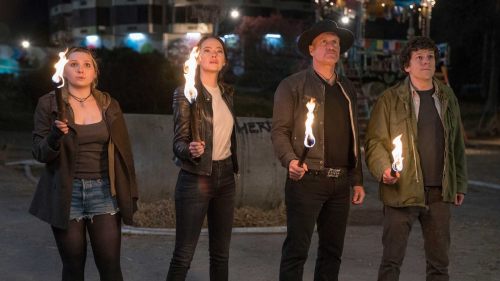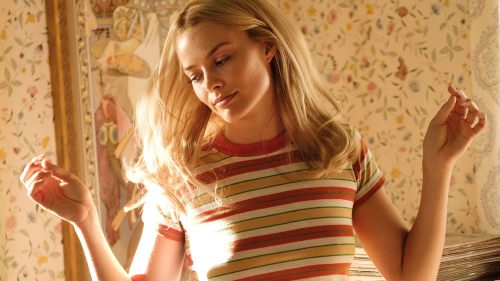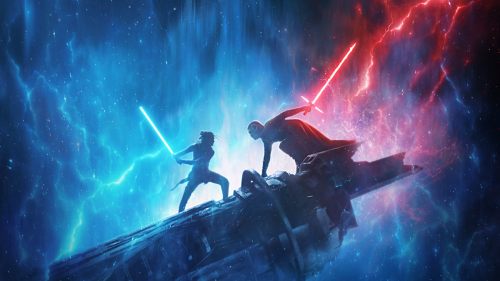Extra, Extra: PACIFIC RIM UPRISING
As sales of physical discs (Blu-ray and DVD) decline, the idea of bonus features becomes less and less essential for new, mainstream films. There will always be a market for library titles with extensive retrospective commentaries and documentaries (see: Criterion, Scream Factory, etc), but for new films it's a dying trend. "Extra, Extra" is an attempt to encourage the studios not to give up on us disc champions, by mostly skipping over the film itself (which you can find reviews for anywhere) and focusing on the bonus features they were kind enough to include. Viva la physical media!
The original Pacific Rim might be my least favorite of Guillermo del Toro's films; it's watchable and well made, but something was just missing from it that kept me from being as engaged as I usually am with the rest of his filmography. So while I was obviously not the target audience for a followup, I was probably one of the very few who was happy Guillermo wasn't returning; far as I'm concerned he could be doing something better with his time (and he did!), and maybe with lowered expectations I could have more fun with Pacific Rim: Uprising. Alas, it's more of the same, as far as I'm concerned, fixing some of the original's issues (better lead hero, for sure - John Boyega can make anything more interesting) but dropping the ball in other areas.
Chief among them: hiring a television guy to direct and co-write the script. While Steven DeKnight's direction is fine (I was never confused during a battle scene, so that's already an improvement over any Transformers movie), the script often feels like a television pilot, establishing too many things in a condensed time, letting several subplots go nowhere, and peppering the film with supporting characters that, if this *were* a TV show, would presumably get developed in later episodes. Very few characters die in the film, so it also feels a bit too safe, which is a problem when it's a movie about giant monsters AND giant robots trying to wipe out the population. It coasts by mainly on Boyega's charm (as well as that of Cailee Spaeny, his co-star), the fleeting thrills of giant things smashing into each other, and the relief that GdT was off winning Oscars instead.
Long story short, like the original, it's fine, but nothing I'll think about again once I get to the last line in this column. That said, if you have a decent home theater setup it's a terrific option to test out your speakers and HDTV. It takes quite a while for the monsters to show up, but you get a few Jaeger on Jaeger fights before then, and any one of them is worthy of being on a demo disc, and if you're 4K-capable, the colorful displays and trademark "busy" Tokyo locations will allow you to easily see the improvement over Blu-ray that it offers (if still not as big a leap from DVD to standard Blu-ray). If you're here for stuff going boom (as opposed to interesting characters, an exciting narrative, etc.) using the most up to date FX and sound design wizardry, the disc is a must own.
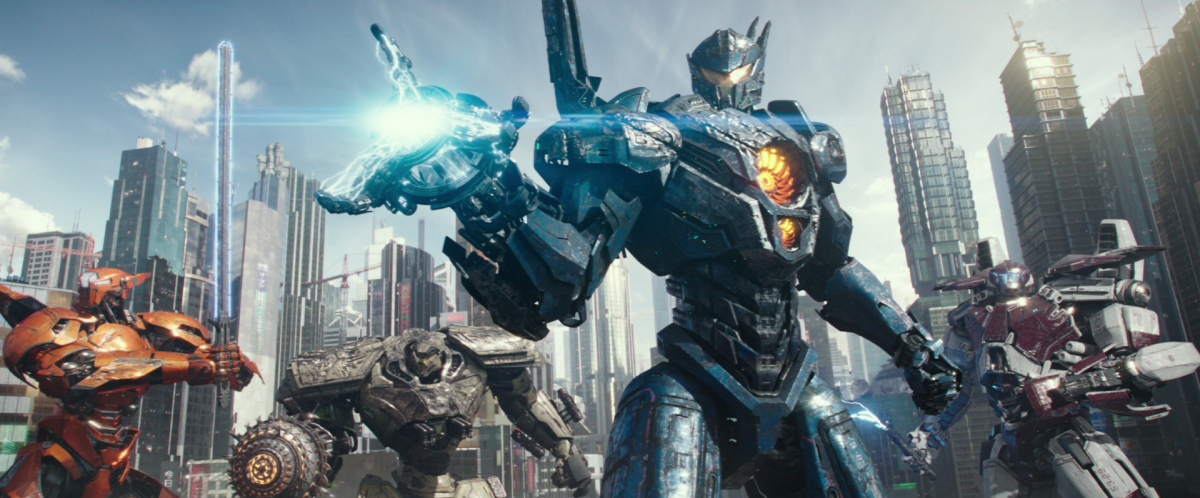
So what about the bonus features? While not as extensive as the package that was put together for the first film, it's got plenty of featurettes, a handful of deleted/extended scenes, and a solo commentary by DeKnight, more than qualifying it as a legit special edition set. The commentary is rather enjoyable, all things considered - he rarely lets it go silent for long as he heaps praise on his actors and crew, points out a few of his goofs (a character mentioning how secure the building is as we see background players walking in and out of it unimpeded), and mentions a number of his influences. The modified Universal logo is the result of his love of Waterworld (!) doing the same, and he had a number of homages to The Thing, though one such nod was in a sequence that had to be cut for budgetary concerns where a kaiju brain would sprout legs and attack the people around it. And if you're wondering how much del Toro was involved (he's still listed as a producer), DeKnight says the scene where Charlie Day's character talks to "Alice" (a kaiju brain he continues to "drift" with) was actually the maestro's idea, so there you go.
DeKnight also provides commentary for the deleted and extended scenes, most of which were clearly cut out early as the FX work isn't finished (backgrounds not fully placed, bad matte work around the actors, etc.). The majority of them are just character moments (some of which ended up being reshot or reused elsewhere), including a rather heartbreaking moment where Amara (Cailee Spaeny) meets her hero Liwen Shao (Tian Jing) only for the woman to instantly dismiss her. The only major loss (besides a baffling cameo by James Gunn as the DJ for the party scene that introduces us to Boyega) is Burn Gorman's Hermann being tasked with inspecting a kaiju brain and replying, in closeup, "I need a chainsaw...", which would have been one of the film's few truly memorable lines had it been left in the cut. However, if you saw the film and wondered if the deleted scenes would resolve the love triangle plot between Boyega, Scott Eastwood, and Adria Arjona that is just completely abandoned, I regret to inform you that there's nothing there, either.
The traditional featurettes kick off with "Hall of Heroes", which tosses poor John Boyega into a massive (fake/poorly greenscreened) hangar with all the Jaegers around him. He then spends a few minutes talking about the various robots: their powers, which class and mach they are, etc., in a manner that had me thinking at any moment he'd be telling you where you could buy the toys and that each were sold separately. I've seen both of these movies and I still couldn't tell you which one was which even among the primary ones, so this was of no interest to me, but I do appreciate the attempt to build them up into Transformers-level icons. I truly think the best medium for this franchise would be a Saturday morning cartoon aimed at the older kids (so, more Disney XD than Disney Junior), and this sort of piece seems to suggest at least someone behind the scenes is thinking the same.

On "Bridge to Uprising", DeKnight talks about the major changes from the first film, along with his justification for them. For starters, since it's been ten years and they haven't had to fight alien monsters, they've used the time to upgrade the Jaeger designs, starting with making their harnesses less constricting so that the pilots (and, more importantly) the actors could move about more freely, allowing newer moves that the bulkier previous incarnations wouldn't allow. He also explains why they are training younger pilots here, noting that you can more easily find people to be drift compatible with if you're less set in your ways as the older heroes in the first film were. The movie may often come across as a cynical cash-in made only for foreign markets (where the original made about 3/4s of its money, barely scraping to $100m here), but it's clear that there was a lot of thought being put into the world and expanding on its mythology.
The next featurette is called "The Underworld of Uprising", and starts off by explaining why Boyega's Jake Pentecost (son of Idris Elba's character) is involved with criminals, but (just as it is in the film) that idea is dropped and it just showcases his friendship with the younger Amara, making me wonder why the piece wasn't just called "Jake Pentecost" or something. Of much more use is "Becoming Cadets", which is the longest of the bunch and the first time I was aware that these things were not created as promotional material, as it features the filming of one of the film's few notable deaths (with DeKnight even telling the camera "Don't watch the features first!"). But mostly it's about the younger pilots who are already in the program when Amara and Jake show up, talking about their training (which was quite rigorous) and the challenges of working in complete sync with their co-star for the Jaeger scenes. Of the ten featurettes, it's probably the best of the lot.
Speaking of spoilers (so, uh, spoilers), "Unexpected Villain" showcases the friendship between Burn Gorman and Charlie Day's characters, how they've grown since the first film, and how much fun they have together as actors. But it also goes into the third act twist when one of them turns villainous, and why the other makes efforts to save him, so it's definitely not a promotional piece. I found this plot point to be one of the weirder calls in the movie, for what it's worth - I don't see the need to have human villains when you have giant monsters (and also evil robots this time), but if you're a fan of the actor I'm sure you'll enjoy seeing him play a bad guy, which is rare. "Next Level Jaegers" goes back into promotional mode, but it covers a lot of the same ground as "Hall of Heroes", so I'm unsure of its purpose beyond sparing Boyega the embarrassment this time.
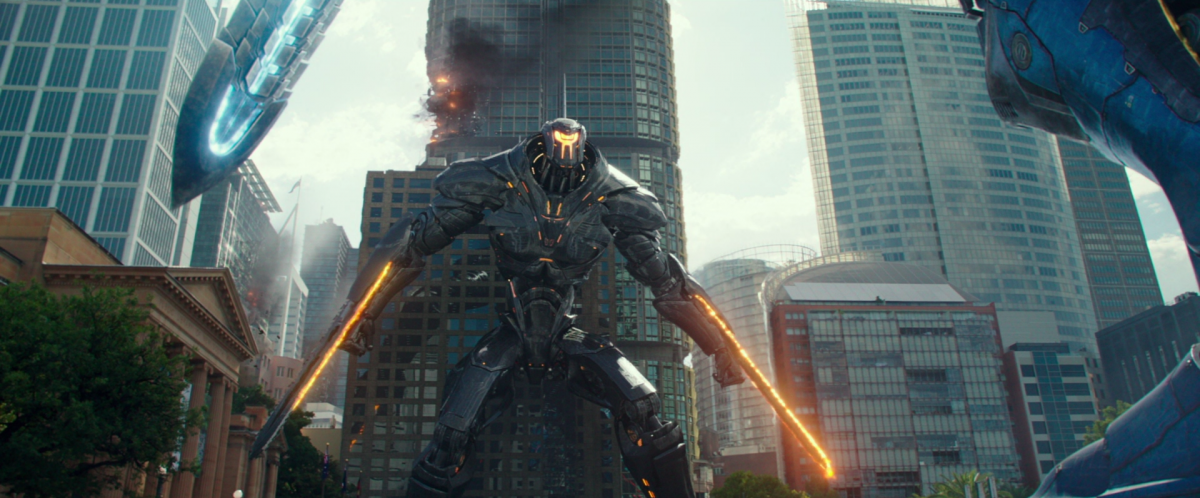
"I Am Scrapper" is much more interesting, shining the spotlight on Scrapper, the smaller Jaeger that Amara builds herself and can be operated solo. Here we learn Cailee Spaeny took a lot of interest in learning how Scrapper would have been built to help flesh out her own character's backstory (most interesting note - its feet are made out of bumper cars from the Santa Monica pier, which is where her character lost her family), and even helped weld pieces of the practical model that they used. Then in "Going Mega" they finally get around to talking about the monsters, which apparently have names like Strikethorn and Ryjen (sp?) and each had unique powers, but thanks to being typical modern CGI monstrosities I couldn't tell them apart anyway to know which one might have the electrical shock ability or whatever. It's around this time I noticed that, unusual for a big budget FX-travaganza, the Blu lacked a specific look at the visual effects, opting instead to show step by step plates during most of the featurettes, illustrating whatever they happened to be talking about with the original shot followed by each layer of CGI that was added on.
Then in a move that must have made Scott Eastwood jealous (I'm not sure if he ever even appears as a talking head in any of these), we get a pair of brief pieces devoted to Jing Tian's Shao and Rinko Kikuchi's Mako. "Secrets of Shao" doesn't have much to offer the world; the character is less generic than she originally seems (she's the head of the seemingly evil corporation making drone Jaegers, but ends up being an ally to our heroes) however she doesn't get enough interaction with the other major players to fully flesh out her character in the film, so there's not much for them to work with here. "Mako Returns" is slightly better, since Kikuchi is one of the three returning actors and she talks about how much she enjoyed getting to return to her. If you've seen the film you know she isn't in it all that much (a decision DeKnight says was necessary for the intended plot of Pacific Rim 3), but she treated her glorified cameo with as much respect as she would if she were the lead.
So it's a decent but unmemorable package for a decent but unmemorable movie. Ultimately the most interesting thing about the film was how similar to Independence Day 2 it was - both feature the deteriorating mental health of someone who mind melded with an alien in the first film, the protagonist is the son of the first film's now-deceased hero who is forced to team up with his old partner/now rival to stop a new threat (and, amusingly, said rival is played by a relative of someone more famous - Chris Hemsworth's brother Liam in ID4-2, Clint Eastwood's son Scott here). Hell, they both even have the same goddamn final line, with someone saying that next time we'll bring the fight to the aliens, setting up a sequel we're not likely to get as both films were financial disappointments. As always, if you're a big fan of the film it won't matter much that the supplements aren't adding much value to the package as you'll want the disc anyway, but if you rented it and aren't sure if you'll have time to watch the bonus features before returning the disc to Redbox, the deleted scenes are the only ones of any value. Part of the problem with the film is that there are simply too many characters without enough time to come into their own, so spending a few extra moments with them (particularly Amara) helps fix some of that. But nothing here can fix the same problem I had with the first one: giant robots fighting giant monsters sounds great on paper, but it doesn't guarantee a fully compelling film.

